The Red-breasted Sapsucker (Sphyrapicus ruber) and the Red-naped Sapsucker (Sphyrapicus nuchalis) were considered different forms of the Yellow-bellied Sapsucker (Sphyrapicus varius) until 1983 when they were split into separate species. They are called sapsuckers because they create sap wells in the bark of woody plants and feed on that sap.
The bird shown above arrived at my house at the end of October, a new species for my yard list! Click on photos for full sized images.
The Red-breasted Sapsucker calls the West Coast home, ranging from southern Alaska south to Baja California. Range map courtesy of NatureServe.
They will hybridize with the Red-naped Sapsucker, especially in the south where their ranges overlap.
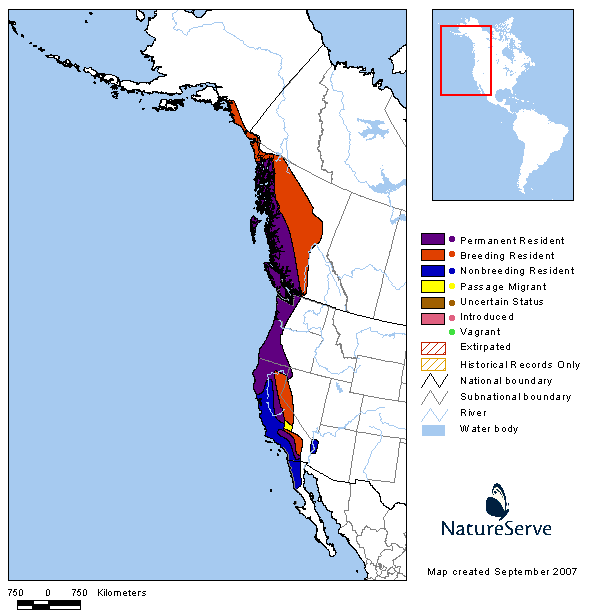
I spotted this sapsucker at Lema Ranch last February. If you look closely, you will spot a sap well at the very top of the photo, right above the bird’s beak.
I assumed that this bird was feeding on something, either arthropods or sap, but as other birds landed in the oak tree, it would stop what it was doing to chase the other birds off to the point of making sure they left and didn’t return.
When I began to research this phenomenon, I discovered that sapsuckers create elaborate systems of sap wells and maintain this resource throughout the day to ensure sap production. Because of this large investment in maintenance, sapsuckers defend wells from other sapsuckers, as well as from other species1.
I also found out that other species make use of sapsucker wells to supplement their food intake with sap or with insects attracted to the sap. Rufous Hummingbirds, for example, appear to be closely associated, ecologically, with both Red-breasted and Red-naped sapsuckers; they place their nests near sap wells, follow sapsuckers in their daily movements, and may even time their migration to coincide with that of sapsuckers so they can feed off the sap wells1.
Back in the summer of ’09 I wrote a post on a Juvenile Nuttall’s Woodpecker that was foraging in an oak tree and an Anna’s Hummingbird that was feeding out of the sap wells in that tree. You can see the multitude of sap wells in this live oak tree as the hummingbird feeds.
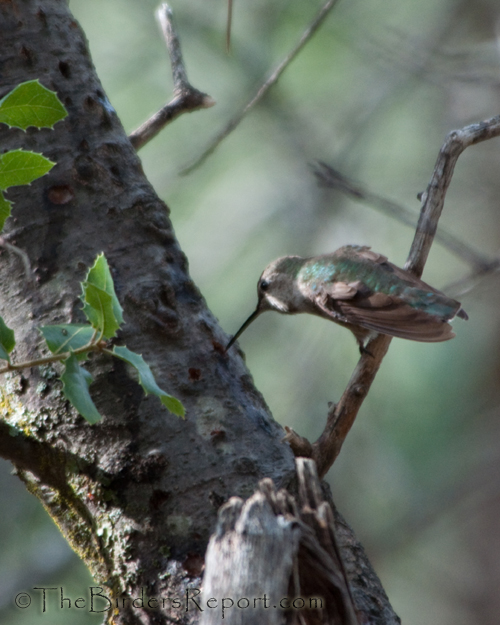
Here’s a portrait of a Red-breasted Sapsucker taken at Lema Ranch in January of 2010.
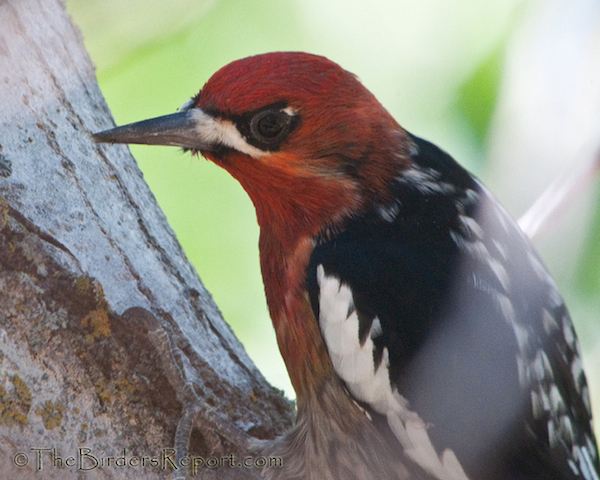
References: 1Birds Of North America Online


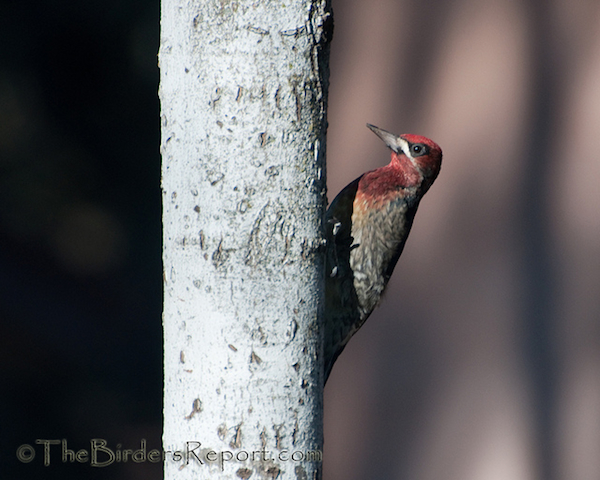

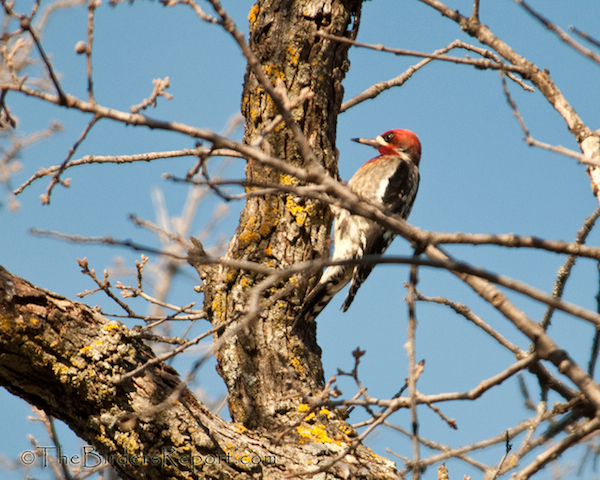
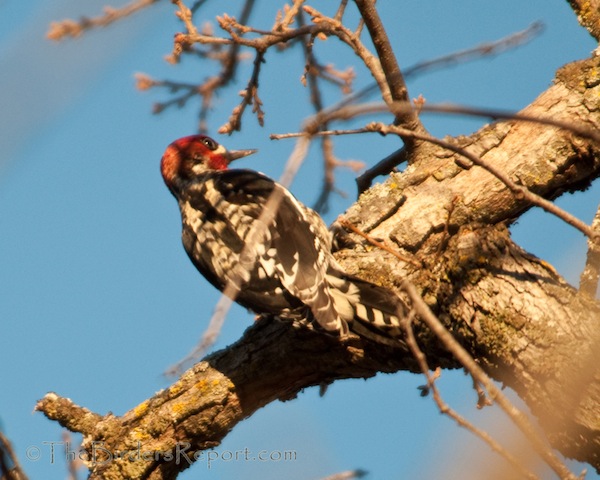











17Feb13, Novato, CA. Saw a red-headed bird in tree in a neighborhood: robin-sized, also red on throat and neck. Seemed to have a pretty long tail. The other thing I noted was prominent streaking on side and flanks. My guess would be red-breasted sapsucker, except for the streaks. Any thoughts? Thanks.